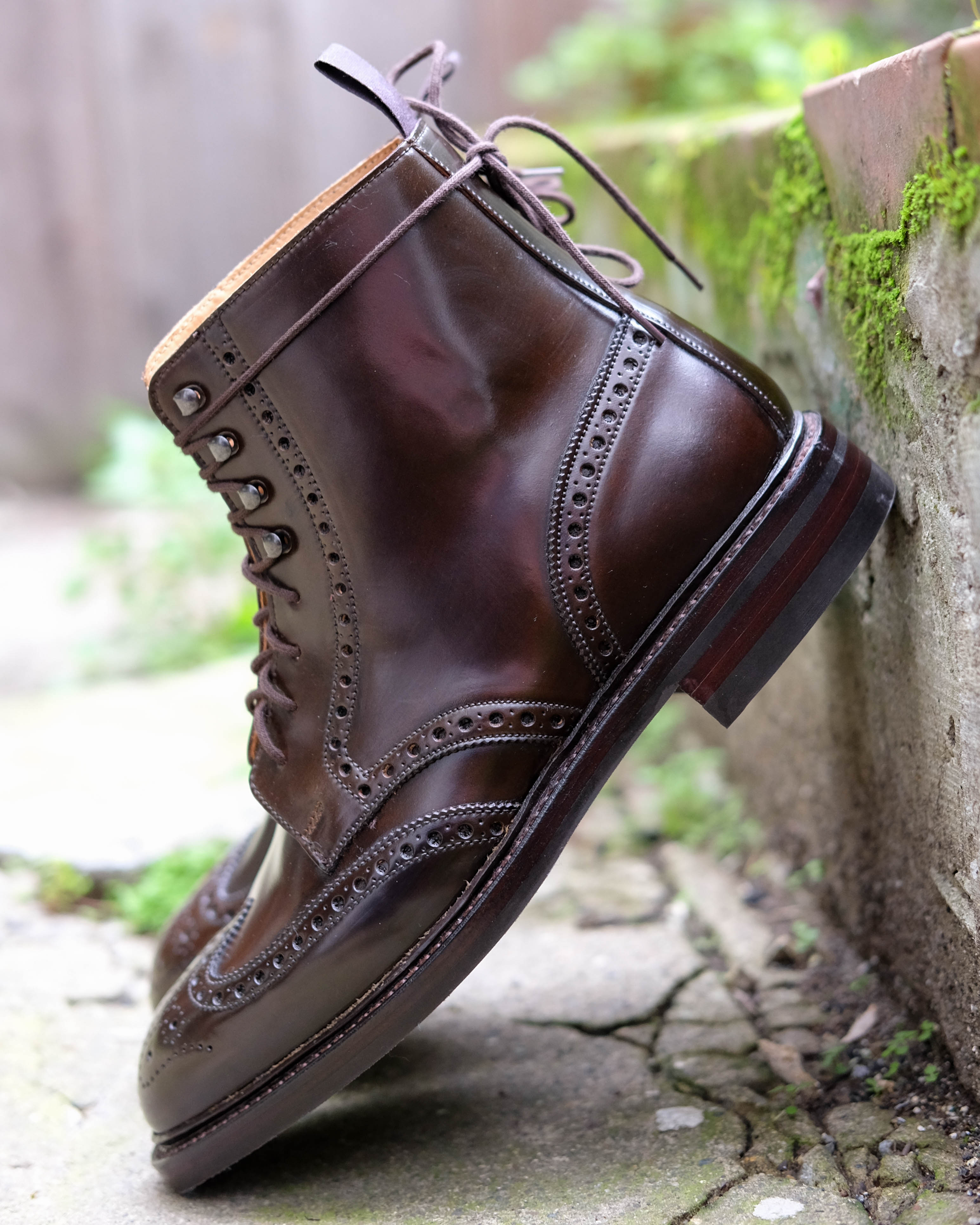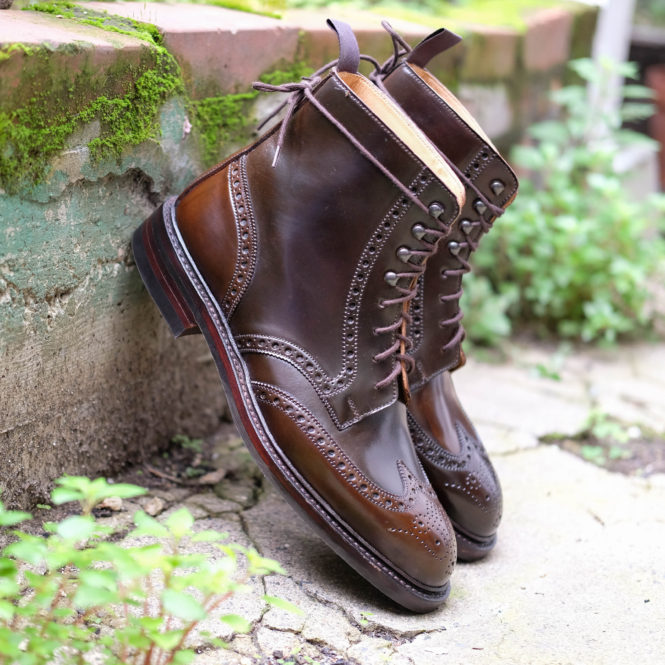When I was in London early last year, I spent a good deal of time at the Crockett & Jones store(s) on Jermyn street, as I discussed earlier. While I wasn’t really planning on purchasing anything initially, the very favorable 1.25:1 exchange rate at the time (along with my ability to try things on – such a rare treat for the online shopper) got the best of me and I ended up leaving with something very special. After a long, warm summer of wishing I could wear these, I’ve finally had some time to put them to use and figured it was high time for a review.
Much has been written about Crockett & Jones already, so I won’t go too far into the company’s history. I’ve said before that I think the brand’s casual styles are their best, and the Skye brogue boot is a great example of that. There are similar models out there – the Islay is taller and rounder, the Lindrick is dressier, exclusive to Ralph Lauren, and no longer available – but the Skye is a nice middle ground in terms of shape, styling, and material.
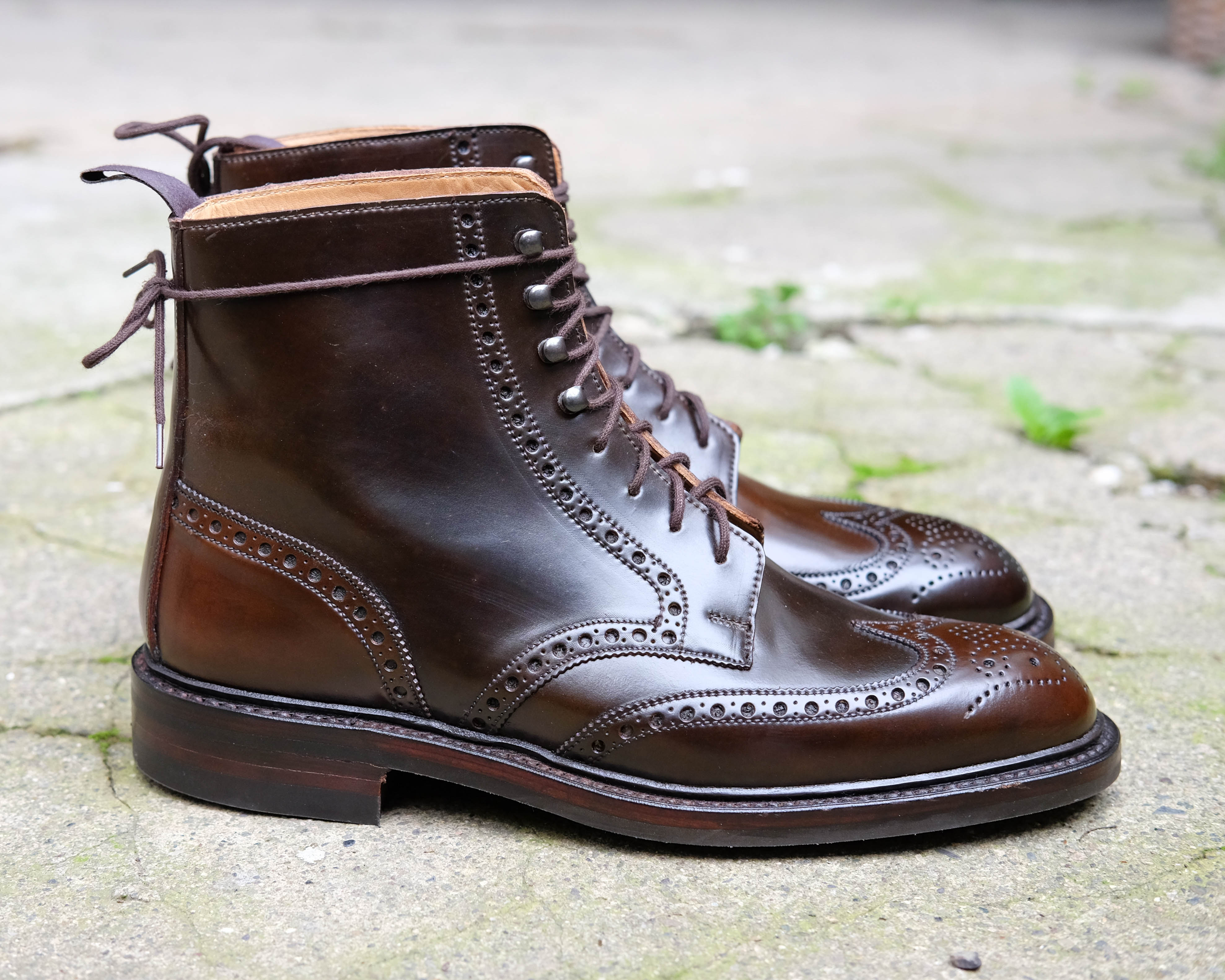
First, for fit – these shoes are made on C&J’s 335 last, one of their roundest options and often found on boots. The fit is comfortable right out of the box – the 335 is a touch roomy but in a comfortable way. I’ve heard of some sizing down an extra 1/2 from their normal UK size, but I found going true-to-size worked well for me. I usually wear a US 8.5 (and occasionally and 8.5E or 9D) and found the UK 7.5 to work well.
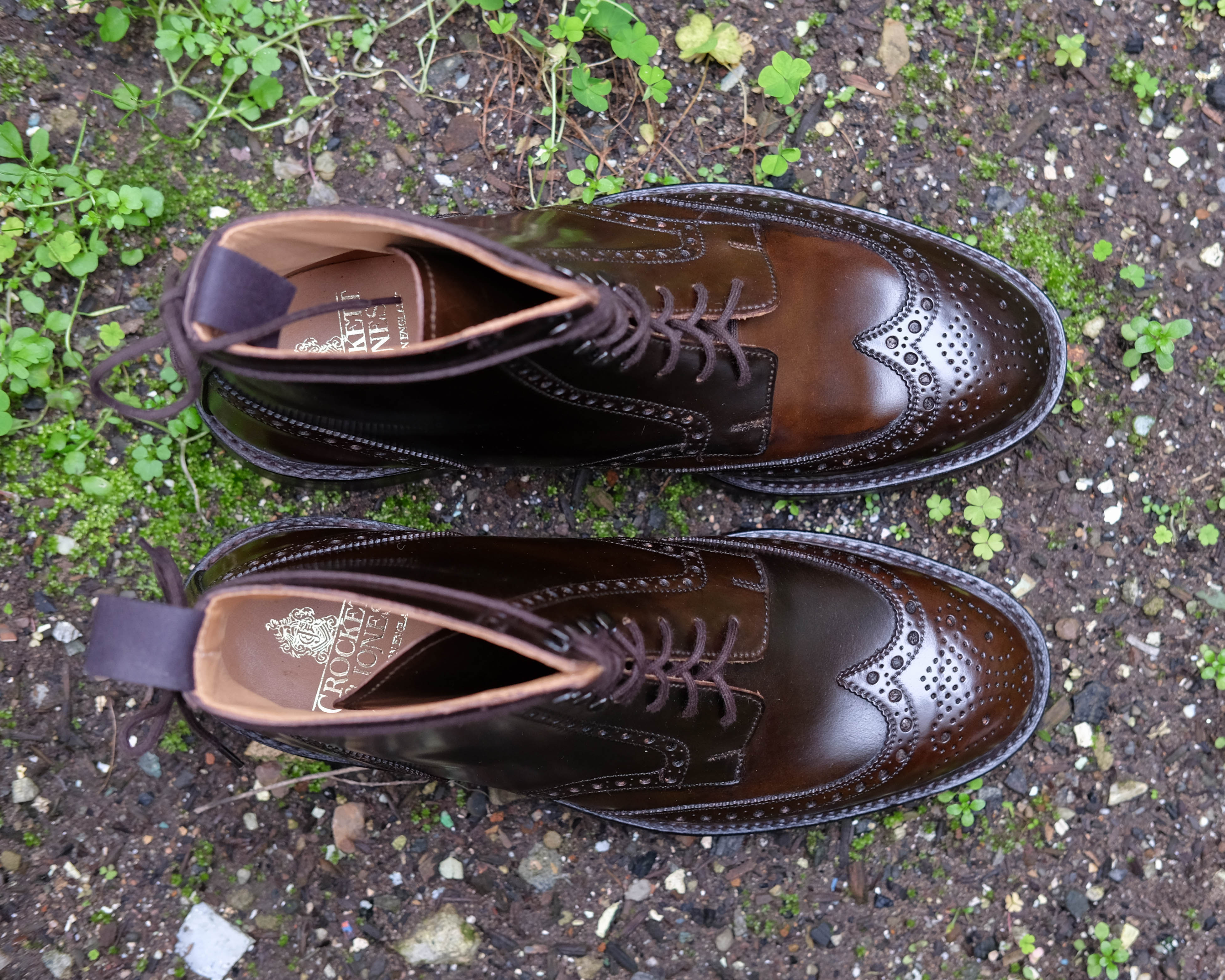
Some other quick specs – the Skye boot is a wingtip boot style with a 4 eyelet/4 speedhook configuration and a Dainite sole (which I love for just about everything except oxfords and loafers). If I were designing these I would probably prefer exposed eyelets to go with the speedhooks (similar to the Lindrick), but it’s not a big issue. The material is the most interesting part – it’s a dark brown shell cordovan from Horween tannery in Chicago. (they’re also available in calfskin). Alden – the brand most known for shell shoes – makes hardly any footwear in shell colors outside of #8 and black, so brown is seen as a bit of a rarity (even though C&J stocks it). The result is a boot that is both in a dark, easy-to-wear color as well as in a shade that isn’t that commonly seen. The material suits the style well, as these are a classic country boot and shell cordovan has its roots in workwear and is known for its hardiness.
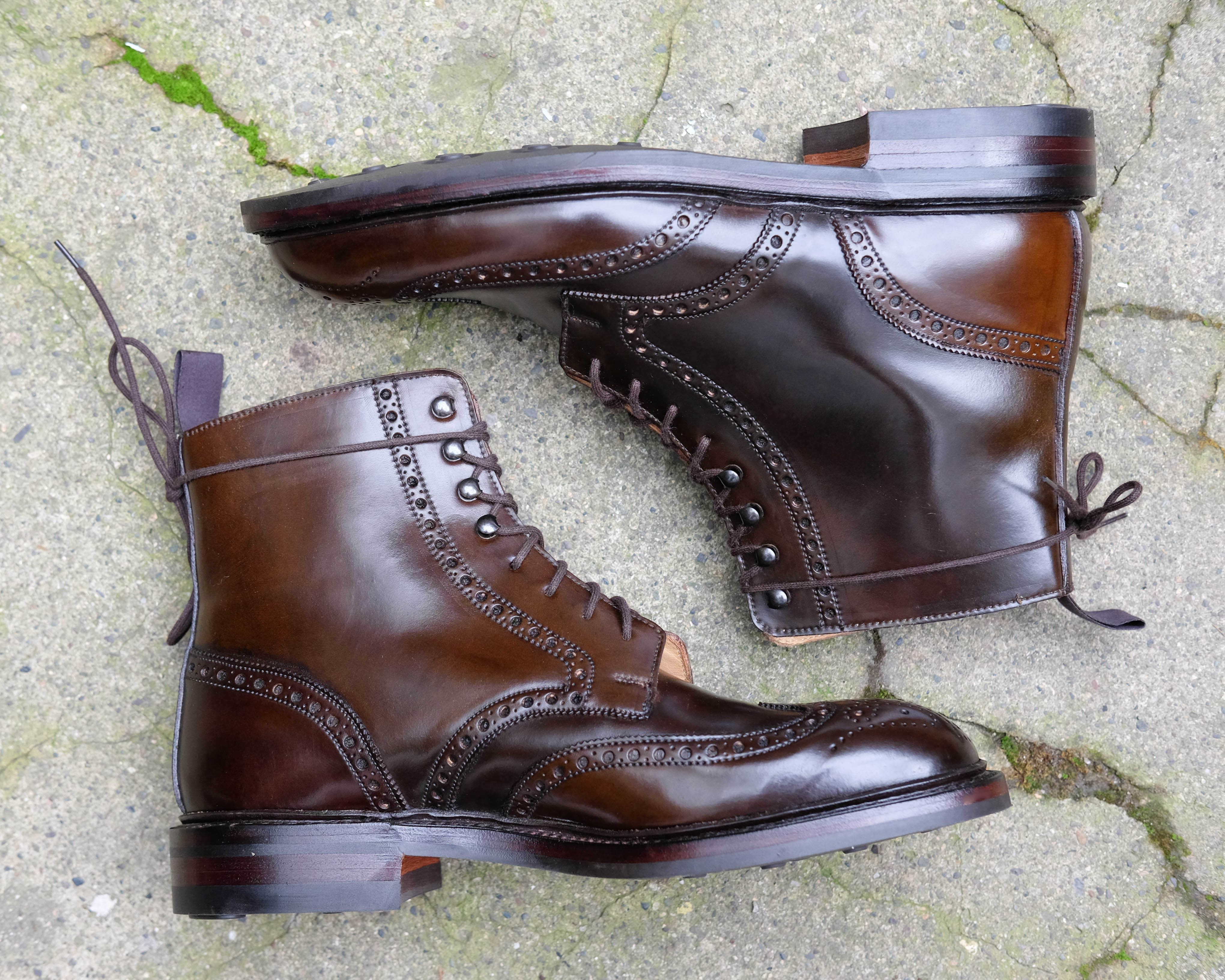
With that said, there are a notable number of small to moderate defects on the boots. Before I get too far into this, I should say that much of this likely comes from working with shell – the material is notoriously difficult to make things out of. Not only does it have very weak tensile strength (it tears easily), but it also requires much more finishing and is overall very finicky. On top of this, the material is exponentially more expensive than more traditional steer leathers, so any mistake is very costly. There is also more color variation between shells than you’d get on a cowhide, where one skin gives you enough leather for many pairs (one shell only makes one shoe). For these reasons, it’s not uncommon to see some imperfections that might not be as acceptable on a more traditional leather. This is a tough pill to swallow given the substantial up-charge shell cordovan incurs, but it’s the bitter truth.
On this pair, the brouging is pretty rough throughout. You can see that most of the ‘holes’ are not very cleanly cut. I’ve seen some similar to this and some substantially better on other C&J shell pieces I’ve handled, so there’s probably some luck of the draw there. There are also two places where there are some smudges on the uppers, presumably glue from attaching the cordovan pieces together. There’s also a notable amount of color variation between the different pieces – some dark brown, some more of a caramel – but this is not concerning to me (some even see it as a plus – the ‘wabi sabi’ nature of shell).
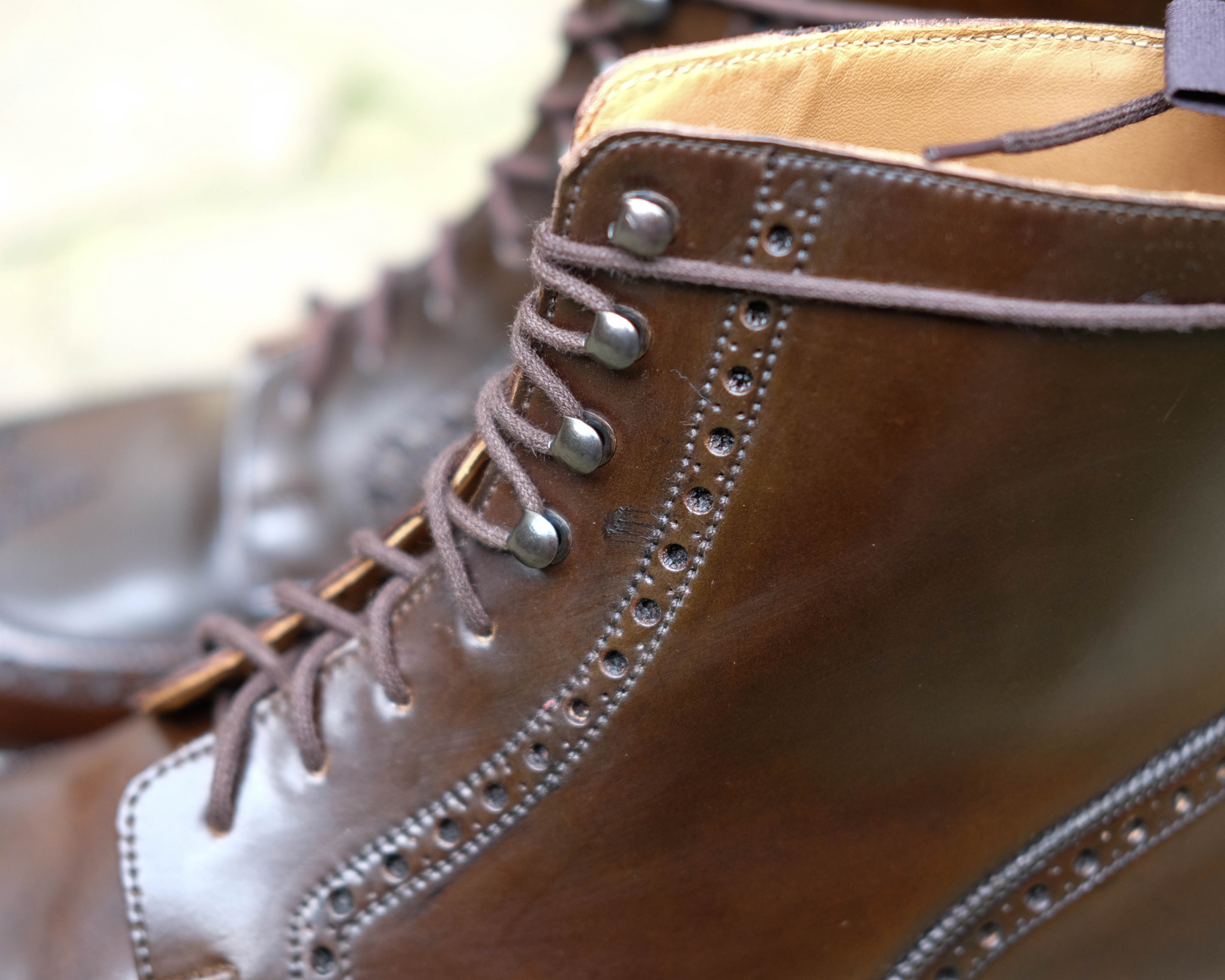
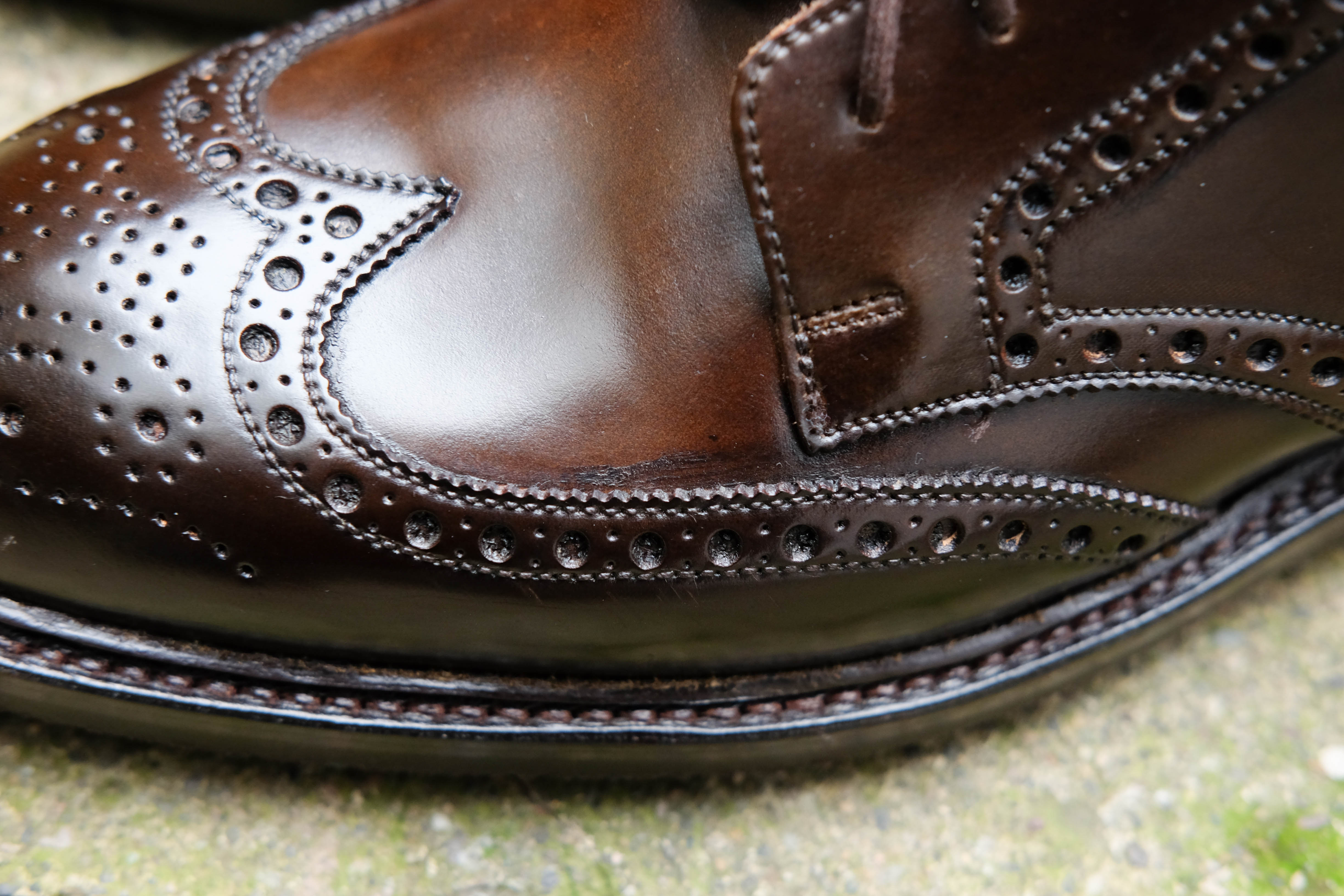
While these cosmetic imperfections are unfortunate, they’re not hugely problematic. It does sting to know that even a highly expensive shoe like this can be anything short of perfect, but that is the reality of shell cordovan. The flaws are purely cosmetic and are only really noticeable on shots like these that shoe nerds (like myself) put on forums for internet points. After a wear or two they’ll be invisible. Some footwear makers have better reputations at clean shell finishing than others (Alden tends to be known for their good work), but ultimately if super clean, instagrammy shoes is what you’re after, you’ll probably be happiest with a different type of leather.
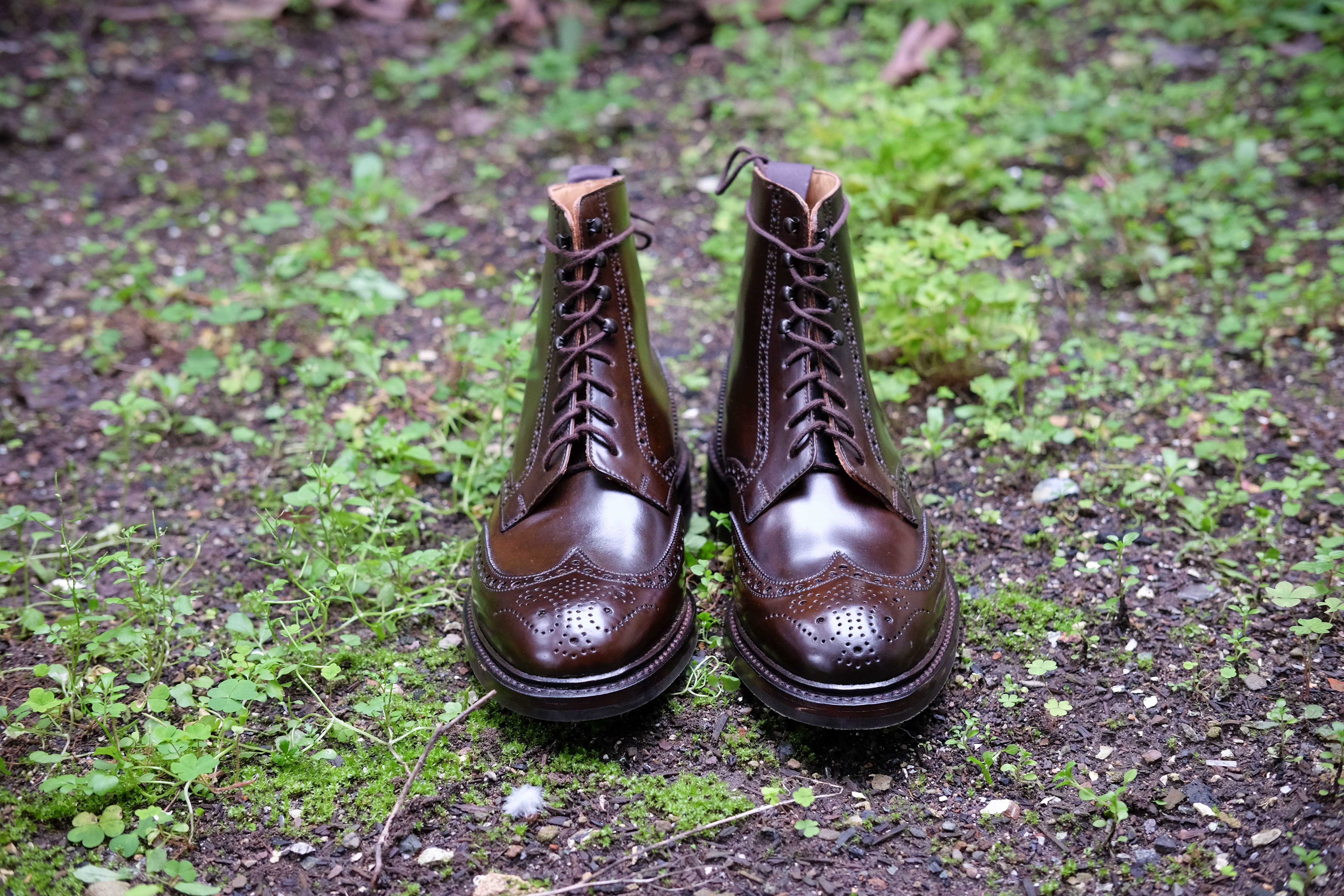
Another important point worth mentioning is the best way to purchase footwear from C&J (at least for US-based customers). While there is a brick and mortar store in New York, the US prices are much higher than the UK prices (around 20-30%) so if you’re a savvy shopper I’d recommend purchasing elsewhere. If you call or email the mail order department you can have shoes mailed to you at the UK price minus VAT, plus a shipping fee (30 pounds or so). One of the reasons I decided to buy in-store (aside from the good exchange rate) was that I wouldn’t have to pay the shipping fee – no VAT and no shipping is the best of both worlds, right? It turns out that it’s a bit more complicated than that. Crockett and Jones – along with any other store I’ve gotten a VAT deduction at – levies some significant fees when giving you the VAT exemption receipt. You still get substantial savings, but not the full 20%. In my case, it actually would have been a bit cheaper to have the boots mailed to me than to have them purchased in store (with their less expensive shoes, the difference is not as significant). Plus, doing the VAT exemption stuff while abroad means you need to do a bunch of paperwork and waiting in line at the airport on your way home, which can be a stressful experience. All this is to say that if you’re thinking about ordering a pair but the shipping fee is making you hesitate, know that even if you were in the store the savings might not be that different.
All told, these shoes are great and have been a joy to wear this winter. They have some cosmetic flaws but after a wear or two they’re effectively invisible. They’re also very expensive – more than I’ve ever spent on footwear – but at the same time were a “good deal” – a favorable exchange rate helped make a prohibitively expensive purchase a bit more tolerable. If you’re willing to spend over $700 and are looking for shell boots, you have a few options to explore. For me, Crockett and Jones was a solid choice. 